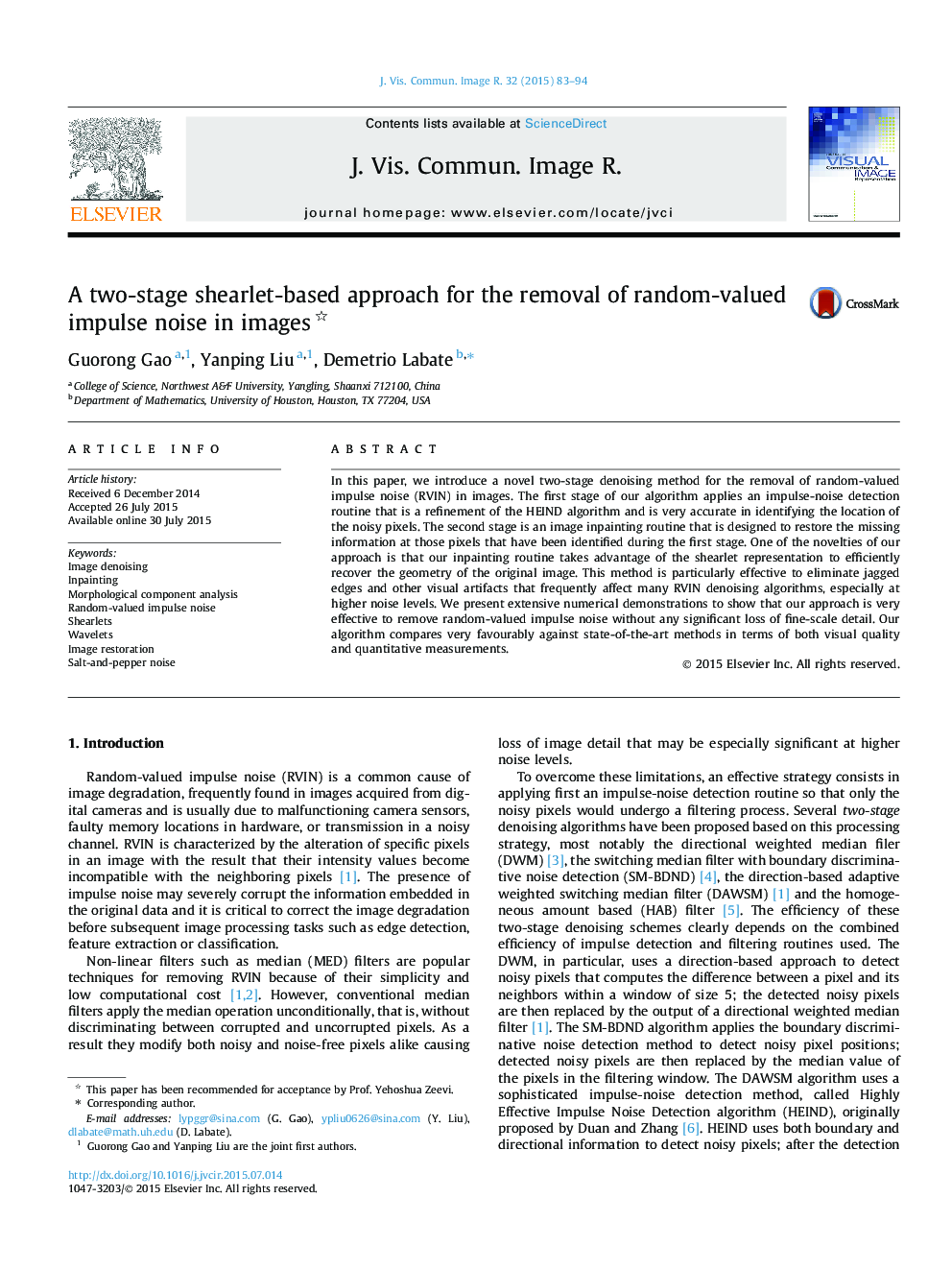| Article ID | Journal | Published Year | Pages | File Type |
|---|---|---|---|---|
| 528995 | Journal of Visual Communication and Image Representation | 2015 | 12 Pages |
•Two-stage denoising algorithm to (i) detect and (ii) restore corrupted pixels.•Improved HEIND routine is highly accurate to detect corrupted pixels.•Innovative combination of noisy pixel detection and inpainting routines.•Shearlet inpainting is especially efficient at restoring edges and curvilinear features.•Outstanding performance for high-level noise with respect to competing methods.
In this paper, we introduce a novel two-stage denoising method for the removal of random-valued impulse noise (RVIN) in images. The first stage of our algorithm applies an impulse-noise detection routine that is a refinement of the HEIND algorithm and is very accurate in identifying the location of the noisy pixels. The second stage is an image inpainting routine that is designed to restore the missing information at those pixels that have been identified during the first stage. One of the novelties of our approach is that our inpainting routine takes advantage of the shearlet representation to efficiently recover the geometry of the original image. This method is particularly effective to eliminate jagged edges and other visual artifacts that frequently affect many RVIN denoising algorithms, especially at higher noise levels. We present extensive numerical demonstrations to show that our approach is very effective to remove random-valued impulse noise without any significant loss of fine-scale detail. Our algorithm compares very favourably against state-of-the-art methods in terms of both visual quality and quantitative measurements.
